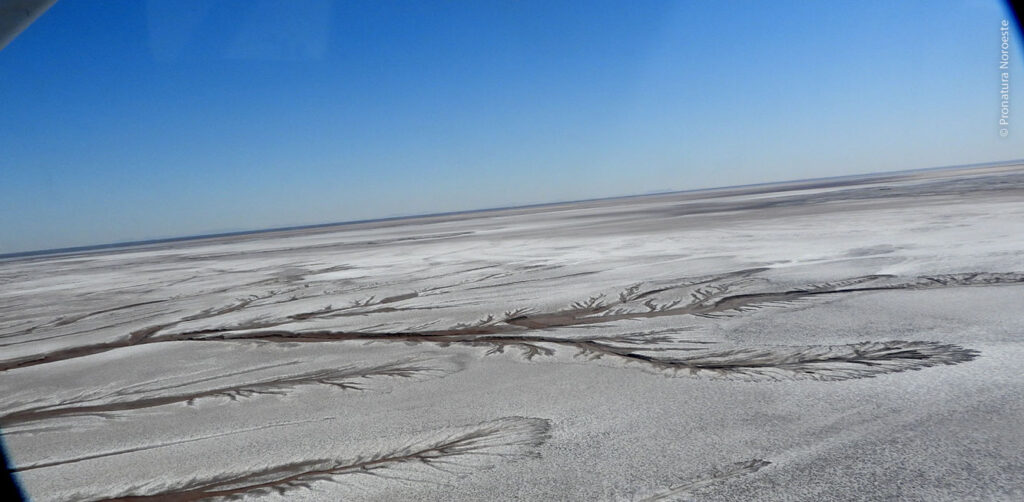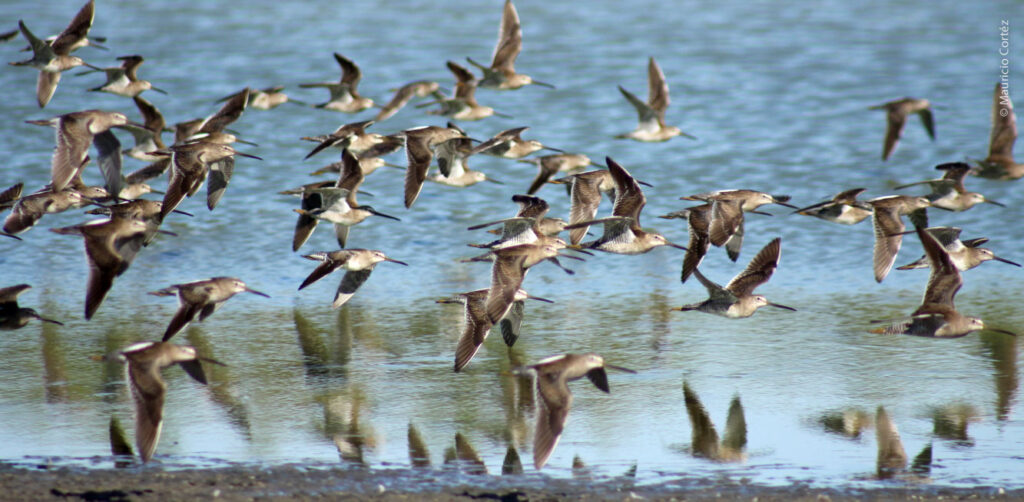The Colorado River Delta is a strategic stopover for shorebirds traveling the Pacific Flyway. These amazing animals are attracted to the shelter and food provided by the shallow waters of the Delta, a binational ecosystem shared by the states of Baja California, Sonora, and Arizona, that serves as a transition between the arctic region of North America and the tropical region of Central and South America.
The shorebirds’ winter journey is essential to fulfilling their life cycle. For their conservation and protection, it is essential to know how many of them visit the mudflats and wetlands of the Colorado River Delta. That is why Pronatura Noroeste conducted the first three surveys this spring on April 8th. In the fall, we will repeat the process to complete six censuses in 2022, as we did in 2021. The aerial counts are carried out by our specialized personnel aboard a light aircraft, flying as low as possible to see the birds in their habitat.

Through these censuses, we can learn about the status and trends of shorebird populations and identify threats that may affect them, which will help us evaluate restoration actions in the area. Likewise, the information obtained allows us to know some characteristics of the ecosystem, such as surface water coverage, the presence of vegetation, and the state of the plain.
The result revealed the presence of 31,000 shorebirds, while in the fall of 2021 about 33,000 individuals were recorded in the same area. The most abundant species has been the Western Sandpiper (Calidris mauri), a small bird that nests in the tundras of Alaska and comes to our region in the winter, where it explores the wetland in search of insects, clams and snails. Populations of American Avocet (Recurvirostra americana), Monjita (Himantopus mexicanus), Short-billed Seedeater (Limnodromus griseus), and Long-billed Seedeater (Limnodromus scolopaceus) were also detected.

It is important to note that, in addition to the aerial survey, a simultaneous ground count is being conducted at eight sites in the Delta. This covers the most important areas of the zone, such as the upper estuary, the Ciénega de Santa Clara to the southeast of San Luis Río Colorado, and the point where the Colorado River and Hardy River merge.
At Pronatura Noroeste we partner with institutions that, like us, are dedicated to conservation and environmental improvement. In this case, we had the support of the U.S. organization LightHawk, which has aircraft and volunteer pilots, who donated the flight to carry out the census. Also collaborating with us was the Audubon Society, a New York-based organization with more than 100 years of experience in bird conservation, as well as the prestigious Cornell University Lab of Ornithology.
Our technical team, composed of Jonathan Vargas, Stefanny Villagómez and pilot Chuck Schroll, was in charge of the bird registration from the plane. The ground counts were conducted by José Juan Butrón, Benito Brambila, Carlos Medina, Alejandra Calvo, Juan Ángel Butrón and Dilan Ortiz. The National Commission of Natural Protected Areas (CONANP), represented byEduardo Soto, Head of the Monitoring Department of the Upper Gulf of California Biosphere Reserve and Colorado River Delta, also participated in the count.
We invite you to collaborate with us in this important conservation effort.













